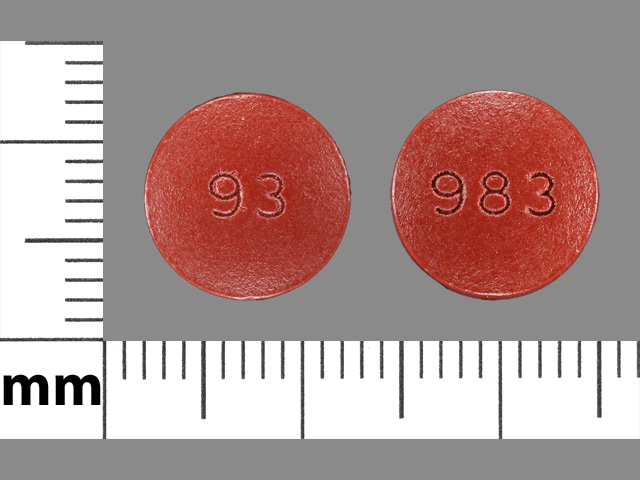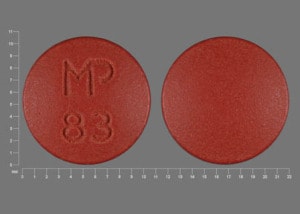Dosage Forms
Excipient information presented when available (limited, particularly for generics); consult specific product labeling. [DSC] = Discontinued product
Capsule, Oral [preservative free]:
Bio-Statin: 500,000 units, 1,000,000 units [dye free]
Powder, Oral:
Bio-Statin: (1 ea)
Generic: (1 ea [DSC])
Suspension, Mouth/Throat:
Generic: 100,000 units/mL (5 mL, 60 mL, 473 mL, 480 mL)
Tablet, Oral:
Generic: 500,000 units
Pharmacology
Mechanism of Action
Binds to sterols in fungal cell membrane, changing the cell wall permeability allowing for leakage of cellular contents
Pharmacokinetics/Pharmacodynamics
Absorption
Poorly absorbed
Excretion
Feces (as unchanged drug)
Onset of Action
Symptomatic relief from candidiasis: 24-72 hours
Use: Labeled Indications
Treatment of susceptible cutaneous, mucocutaneous, and oral cavity fungal infections normally caused by the Candida species
Contraindications
Hypersensitivity to nystatin or any component of the formulation
Dosage and Administration
Dosing: Adult
Oral candidiasis: Suspension (swish and swallow): 400,000-600,000 units 4 times/day; swish in the mouth and retain for as long as possible (several minutes) before swallowing
Intestinal infections: Oral tablets: 500,000-1,000,000 units every 8 hours
Note: Powder for compounding: 1/8 teaspoon (500,000 units) to equal approximately 1/2 cup of water; give 4 times/day
Dosing: Geriatric
Refer to adult dosing.
Dosing: Pediatric
Oral candidiasis: Oral suspension:
Infants: Oral: 200,000 to 400,000 units 4 times daily or 100,000 units to each side of mouth 4 times daily; one study of 14 patients (neonates and infants) found higher cure rates using 400,000 units/dose 4 times daily (Hoppe 1997)
Children and Adolescents: Oral: 400,000 to 600,000 units 4 times daily; administer half of dose to each side of mouth; swish and retain in the mouth for as long as possible before swallowing.
Peritonitis (Peritoneal dialysis), prophylaxis for high risk situations (eg, during antibiotic therapy or PEG placement): Oral Suspension: Infants, Children, and Adolescents: 10,000 units/kg once daily (Warady [ISPD] 2012)
Administration
Suspension: Shake well before using. Should be swished about the mouth and retained in the mouth for as long as possible (several minutes) before swallowing.
Storage
Tablet and suspension: Store at controlled room temperature of 15°C to 25°C (59°F to 77°F).
Powder for suspension: Store under refrigeration at 2°C to 8°C (36°F to 46°F).
Nystatin (Oral) Images
Drug Interactions
Saccharomyces boulardii: Antifungal Agents (Systemic, Oral) may diminish the therapeutic effect of Saccharomyces boulardii. Avoid combination
Adverse Reactions
1% to 10%: Gastrointestinal: Diarrhea, nausea, stomach pain, vomiting
<1%, postmarketing, and/or case reports: Hypersensitivity reaction
Pregnancy
Pregnancy Risk Factor
C
Pregnancy Considerations
Animal reproduction studies have not been conducted. Adverse events in the fetus or newborn have not been reported following maternal use of vaginal nystatin during pregnancy. Absorption following oral use is poor.
Patient Education
What is this drug used for?
- It is used to treat many fungal infections.
Frequently reported side effects of this drug
- Abdominal pain
- Nausea
- Vomiting
- Diarrhea
Other side effects of this drug: Talk with your doctor right away if you have any of these signs of:
- Mouth irritation
- Signs of a significant reaction like wheezing; chest tightness; fever; itching; bad cough; blue skin color; seizures; or swelling of face, lips, tongue, or throat.
Note: This is not a comprehensive list of all side effects. Talk to your doctor if you have questions.
Consumer Information Use and Disclaimer: This information should not be used to decide whether or not to take this medicine or any other medicine. Only the healthcare provider has the knowledge and training to decide which medicines are right for a specific patient. This information does not endorse any medicine as safe, effective, or approved for treating any patient or health condition. This is only a brief summary of general information about this medicine. It does NOT include all information about the possible uses, directions, warnings, precautions, interactions, adverse effects, or risks that may apply to this medicine. This information is not specific medical advice and does not replace information you receive from the healthcare provider. You must talk with the healthcare provider for complete information about the risks and benefits of using this medicine.



